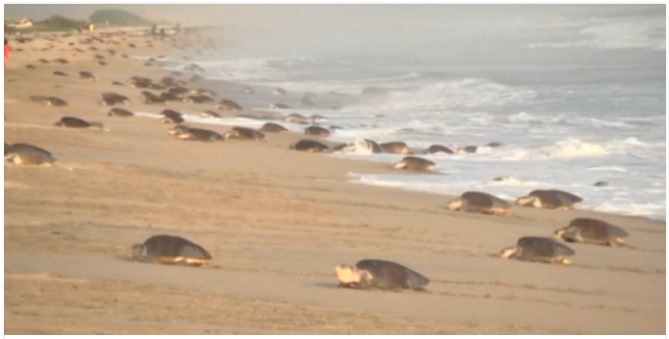

The synchrony of sea turtle hatchlings emerging from within a nest is typically believed to reduce predation and is often used as a typical example of the anti-predator role of grouping because predation on these otherwise helpless hatchlings is high as they crawl to the sea and swim away from the shore. Although costs arise from increased conspicuousness (although see ), aggregation provides benefits because risk is diluted among group members, multiple targets visible simultaneously can confuse predators' targeting, and predators are more likely to be detected sooner through collective vigilance. The relationship between prey group size and predation risk has been the target of many studies in a variety of species.
COLUMN FOR PROTECTED SEATURTLE NESTS DRIVERS
Of the proposed explanations for grouping, reducing predation risk is perhaps the most general, and is widely believed to be one of the main drivers in the evolution of aggregation behaviour. These aggregations may be driven by a variety of reasons, such as defence, foraging and movement efficiency, and considerable attention has been focused on examining the benefits and costs of group formation. Individuals aggregating in temporary or permanent groups is a common behaviour among many species. Using a system with relatively pristine conditions for turtle hatchlings and their predators provides a more realistic environmental context within which intra-nest synchronous emergence has evolved. Further analysis revealed that the effect of time of day was due to the number of hatchlings already killed in an evening this, along with the apparent lack of other anti-predatory mechanisms for grouping, suggests that synchronous emergence from a nest appears to swamp predators, resulting in an attack abatement effect. This effect was only observed earlier in the night when predation pressure was greatest, indicated by the greatest predator abundance and a small proportion of predators preoccupied with consuming captured prey.

Here, we show for the first time that increased group size (number of hatchlings emerging together from a nest) reduces green turtle ( Chelonia mydas) hatchling predation.

This synchrony may be adaptive by reducing predation risk, but few data are available in any natural system, even for iconic examples of the anti-predator function of group formation. In egg-laying animals, despite the various factors that promote intra-clutch variation leading to asynchronous hatching and emergence from nests, synchronous hatching and emergence occurs in many taxa. Group formation is a common behaviour among prey species.


 0 kommentar(er)
0 kommentar(er)
